
Issue 090
July 2012
Ever wondered what it takes for a world-class fighter to step foot inside the Octagon? Fighters Only goes behind the scenes and pulls back the curtain on professional fight camps in mixed martial arts...
When a mixed martial artist steps foot into a cage to battle another man, the average Joe would assume the challenge that lay ahead was the hardest part of a fighter’s journey. The task of trying to beat another man into submission, who at the same time is trying to do the same to you, is viewed as incredibly daunting. However, if you ask a fighter what they fear the most in regards to MMA, it’s not the fight itself – but the training camp.
Whilst a fight can last up to 25 minutes if a belt is at stake, a training camp can be anything from eight to 12 weeks of pure torture. An intense mixture of grappling, striking and strength and conditioning are all used to break your body down and build it back up so stronger than it’s ever been. The idea is to ensure that when a fighter steps into the cage, they’re in the best possible shape. However, some fighters can be left physically and mentally destroyed from the experience.
Fighters Only speaks to some of the biggest stars in the sport for an in-depth investigation into what can make or break a professional fight camp, and how a great camp can truly separate the winners from the losers.
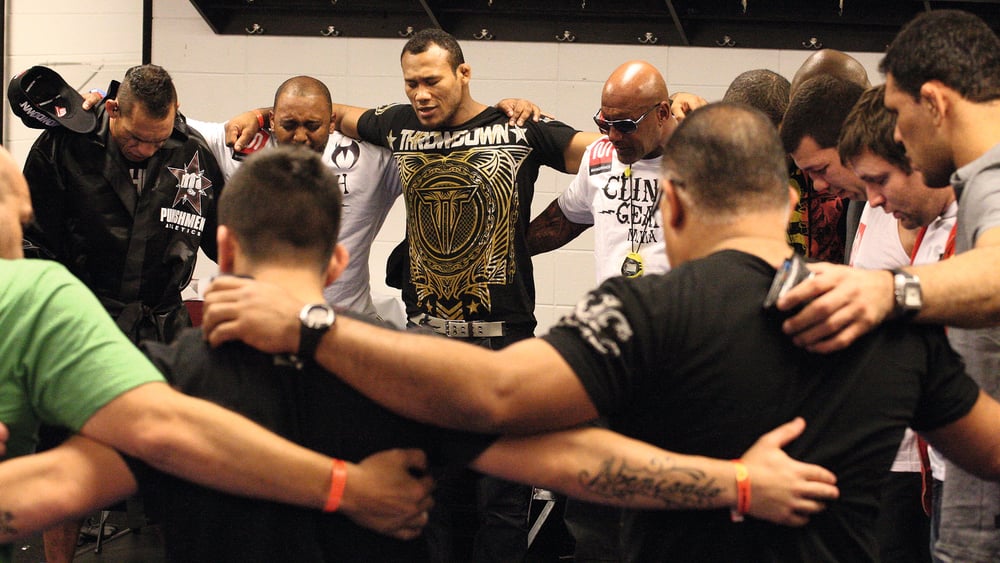
You’re only as good as your team
People always talk about Jon Jones as this fantastic, physical specimen. A man who can do things that will make your mind boggle. Whether it’s the spinning back-elbow that made Stephan Bonnar face-plant to the canvas, or his vise-like grip guillotine choke that put Lyoto Machida to sleep quicker than an entire bottle of Xanax, Jones has shown an incredible amount of dominance in every fight.
However, he’ll be the first to tell you that without the likes of Greg Jackson, Mike Winkeljohn and Kru Phil Nurse, he wouldn’t be half the fighter he is today. If you don’t have the right team making sure you improve, then it’s going to be a quick night in the cage.
“I think one of the most important things for a training camp is having everybody on the same page,” says top MMA head coach, Marc Laimon. “My striking coach, my strength and conditioning coach are all on the same page. We’re all fight nerds. We’re always watching fights and asking each other if we’ve seen this or that.”
Laimon has been a mainstay in the world of MMA and jiu-jitsu for 16 years and came to the attention of most fans when he was the grappling coach on seasons 1, 2 and 4 of The Ultimate Fighter. He also coaches with Team Takedown, which includes UFC welterweight contender Johny Hendricks among its cast. With all of his experience in combat sports you’d think he would have a distinct formula for how to defeat other fighters, but the secret to his success is rudimentary at best.
“Generally, what happens is we find out who our opponent is going to be and then I get copies of the fights to all of our trainers,” Laimon says. “Our strength and conditioning coach is a BJJ black belt and has some limited experience in MMA. We also have our striking coach who has some MMA experience. I get all the copies of the fights I want them to see, then we usually get together at a dinner and breakdown what we see in the opponent, and we discuss how we feel we can capitalize on it.”
Sounds simple enough, but when you factor in the hours of tape, the constant note-taking and the sheer attention to detail it takes, then you quickly realize that being a head coach is not for someone who isn’t 100% dedicated to the cause.
“This is pretty much my full-time job,” states Laimon. “I don’t have any other students or fighters to worry about. All I do is watch fights, break them down and see where I can implement our strengths against their weaknesses. It’s just a constant study of the game. If you’re not constantly studying the game, then you’re going to get left behind. You can’t rest on your laurels, because the top guys now don’t realize that we’re in the ‘leather helmet days of football.’ There’s still so much more that fighters need to improve on. There’s still so much more training technique that needs to be learned.”
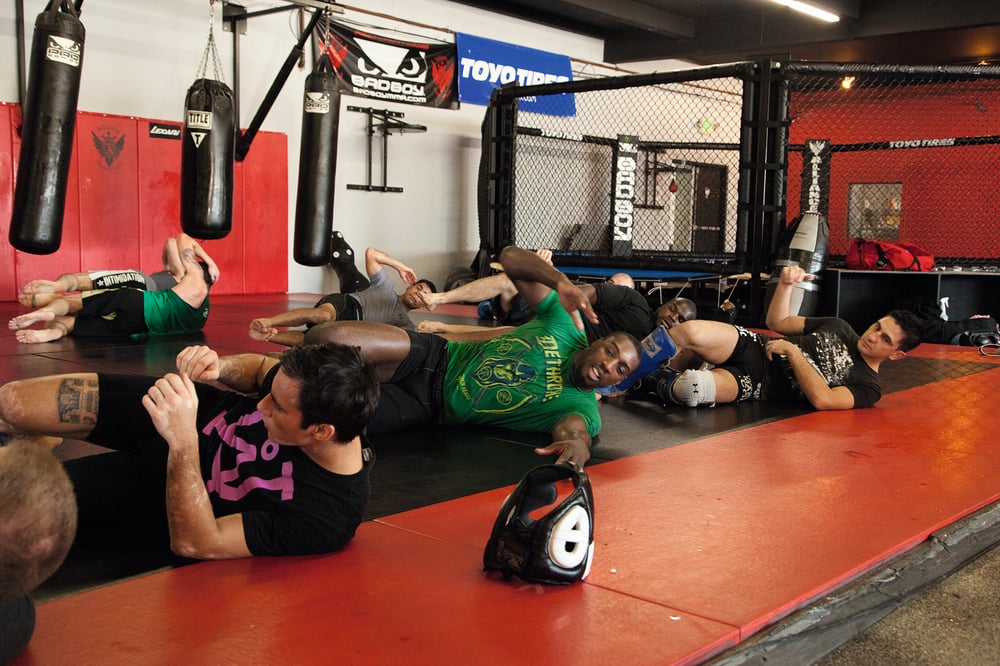
Pushing yourself to the limit
So how does a fighter ensure they have a good camp? When a fighter has brought together his team and the game plan has been figured out, the last part of the jigsaw is themselves. Nothing has really changed from the old martial art movies, where the wise master would make his student do incredibly difficult tasks so that they’re not overawed in combat. In fact, it’s probably become even more intense.
During his fight camps for Kenny Florian and Diego Sanchez, future UFC Hall of Famer BJ Penn worked with the famous Gary and Marv Marinovich for his strength and conditioning. According to the former UFC lightweight and welterweight champ, the two broke him down to the point that he was unable to pick up his baby girl after training. That may sound horrific, but when you look at both of his swashbuckling performances against two fantastic opponents then the question has to be asked – is this what it takes to be the best in the world?
Laimon believes so. Ahead of the match against Jon Fitch, he ensured Hendricks got his ass kicked on the wrestling mats night after night. “In the Jon Fitch fight we were very nervous about Jon trying to get Johny down to the ground and laying on him for three rounds. We live very close to Oklahoma State University, which is the most successful college in terms of wrestling in the US,” he says.
“John Smith is the coach, and is also arguably the greatest wrestler in the world ever. We went up there because we know if we go anywhere else they’re going to be like, ‘Oh, he’s Johny Hendricks. He fights in the UFC,’ but the guys at Oklahoma State don’t think like that. They think, ‘This guy’s a four-time NCAA Division 1 All-American. I’m going to f**k this guy up.’ These guys are killers. They have no respect for him and they’re going to try and take him down.”
Why would a coach put their fighter through that? Surely they want the best for their charges, as a win for the fighter is not only a win for them, but it’s also a way to make sure that their bank account doesn’t go into the red.
‘Without risk, there is no reward’ is the old adage that comes to mind. If an athlete is not willing to push themselves to the brink of a physical breakdown, then how can they be prepared to go against someone like Nick Diaz who won’t stop trying to beat their face in for five rounds?
If a fighter hasn’t done what Hendricks or Penn did for their fights, then, as we’ve seen on numerous occasions in MMA, once a fighter steps foot in the cage, it will become evident very quickly that they’ve let their camp go to waste.
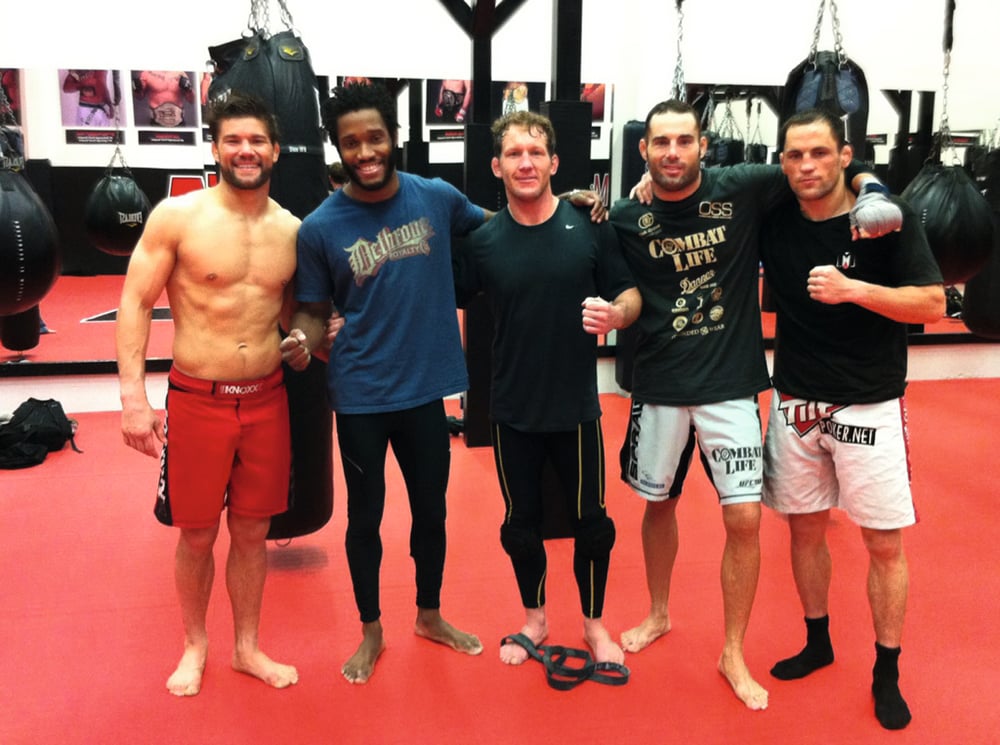
The good, the bad and the ugly
‘I’ve had the best camp ever. There’s nothing else I could’ve done.’ How many times have we heard a fighter say that, and how often do we actually believe them? Sure, in an ideal world, every fighter would have a great training camp. Their striking would be crisp, their grappling would be so slick that a flying triangle choke would be as easy as an armbar, and their cardio would see them running for days on end like their name was Forrest Gump.
However, this is never the case, and bad things, more often than not, do happen in camps. Whether it’s because the coach is giving a fighter bad advice, the athlete is ignoring the advice of coaches or the fighter is simply just feeling rundown, there is always the potential some sort of shenanigan will screw things up.
“It took me awhile to transition into the grappling aspect of things,” acknowledges UFC welterweight Duane Ludwig. “Being a kickboxer, you only learned how to slip punches and block strikes. I should’ve fully immersed myself and been a mixed martial artist. It took me years to understand that. I had coaches who would tell me to, ‘Defend the takedown,’ ‘Defend the submission,’ ‘Work to get back up.’
“I spent a lot of years that were f**king wasted working on defense. I wasn’t working on doing my own takedowns or working on my own submissions. That’s a big part of the game. Half of that is listening to stupid coaches and the other half of that is me believing that dumb s**t. Now I go to wrestling classes and I’m a jiu-jitsu practitioner. The world has changed for me.”
How many other fighters have we seen fall into the same trap that Ludwig did, but unlike Ludwig, they didn’t have the same self-awareness to change it? Would Masakazu Imanari have lost eight decisions in his career if he didn’t rely so heavily on his legendary leg locks? Would Pat Barry have beaten Stefan Struve if he’d realized that using a powerbomb to try and break Struve in half may look cool, but is also the worst thing you can do to defend yourself against a triangle?
However, sometimes it doesn’t boil down to bad coaching or the fact that the fighter isn’t motivated enough in a camp. Sometimes it can just be bad luck or bad timing. “The thing with training, whether it’s during a fight camp or in general, is that there are good days and bad days. We had a situation a few weeks ago when Johny felt a little rundown during his sparring, and it wasn’t a great session,” Laimon recalls.
“Then he went out to wrestle at OSU and we didn’t get a chance to do sparring for like a week, which sucked for me and all the other coaches because we got left with a bad taste in our mouth for an entire week. When he came back, though, he looked great and was totally on point. That’s the best thing about training, because you could have a bad session one day, but it doesn’t have to be that way for the next one.”
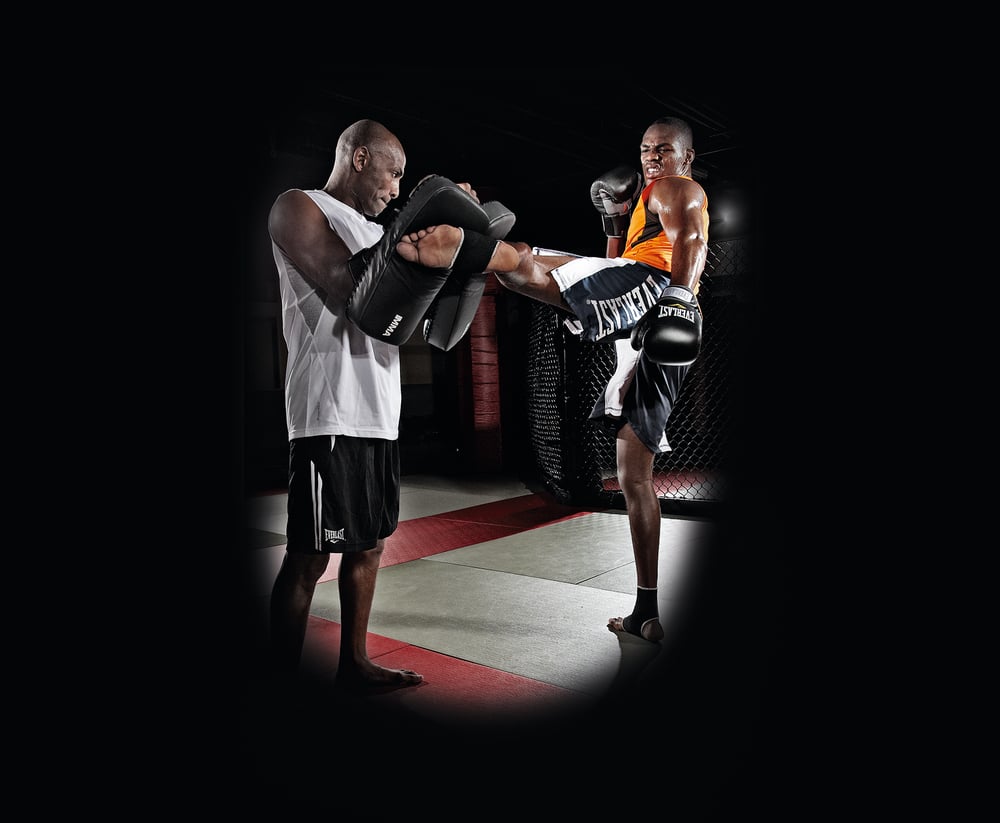
Going it alone
The idea of doing all your work in one gym with the same coaches for each and every camp is still largely favored by most fighters, but as the sport continues to grow, an increasing number of top-level mixed martial artists are branching out and looking for help in different quarters of not just the MMA world, but the sports world in general.
Former number-one contender for the UFC lightweight title, Gray Maynard, spent his entire career at the world-renowned Xtreme Couture gym before he decided he wanted to branch out and broaden his horizons as a mixed martial artist and an athlete. His first stop? Brazil.
“When [Jose Aldo] was fighting Florian and I was fighting Edgar, we met and talked about stuff. I found out that he was a nice dude and we got on well. When I found out that he was going up against Chad Mendes, I figured I could help him out. I called him and he was down for me coming to Brazil and training,” Maynard tells FO.
“It was a great experience, really eye opening. They’ve got a bunch of good guys over there who train hard and smart. It was just good all the way through.”
After training with the featherweight champion, Maynard returned to the States and, instead of resting on his laurels, he created his own team to help him in his quest to get back to a title shot. “There’s just a lot of stuff up in the Bay Area for me to choose from, so I’m taking advantage of it,” he explains. “I’m working with a guy called Rick Noble for boxing and Garth Taylor for BJJ, Gary and Marv Marinovich for my strength and conditioning, and I’m at AKA two or three times a week for my sparring.
“My goal for this camp is to peak on the day of the fight. To be at my best. I can’t tell you if I’m going to add this or that, but I just want to be at my peak on that night. I want to be in shape, no drama, no problems. I want to be ready to go. I think that if that’s the case then it’s going to be a quick night for Clay [Guida, opponent at UFC on FX 4 on June 22] and for pretty much anybody. That’s my entire goal from now on. Before, I’ve had a couple of issues in camp, but now it’s all up to me and I can handle it. I have to handle business.”
Maynard isn’t the only one who has been globetrotting the world and traveling across the country for his training. WEC veteran and top UFC bantamweight Brad Pickett has become a nomad too, traveling between the UK and US for a number of years whilst taking a group of British MMA prospects like Luke Newman, Bola Omoyele and Michael Pastou to American Top Team in Florida with him to gain experience. After a loss to Renan Barao at UFC 138, the Brit decided it was time for a change in the way he trained.
“Basically, my fight camp started at the beginning of each year. I used to get out of shape, then get myself in shape and do a fight camp for 10 weeks. My ambition this year was to train like an athlete and train all year round,” he explained
“I started working with a guy called Tim Benjamin, who is a former Olympian in the 400 meters and he was ranked number one in Europe for seven years. He’s helped me a lot with my strength and conditioning. And I’ve been working a lot on my jiu-jitsu with Jude Samuel and training my wrestling with Dani Vlad. That’s all at home in the UK.
“I also spar regularly at Team Titan and also tick over at Urban Kings gym, both in London, so I am now arriving in America already in great shape. Previously, I’d go there and I have to wait a few weeks to get going, but this time I hit the ground running. It was a really good training camp.”
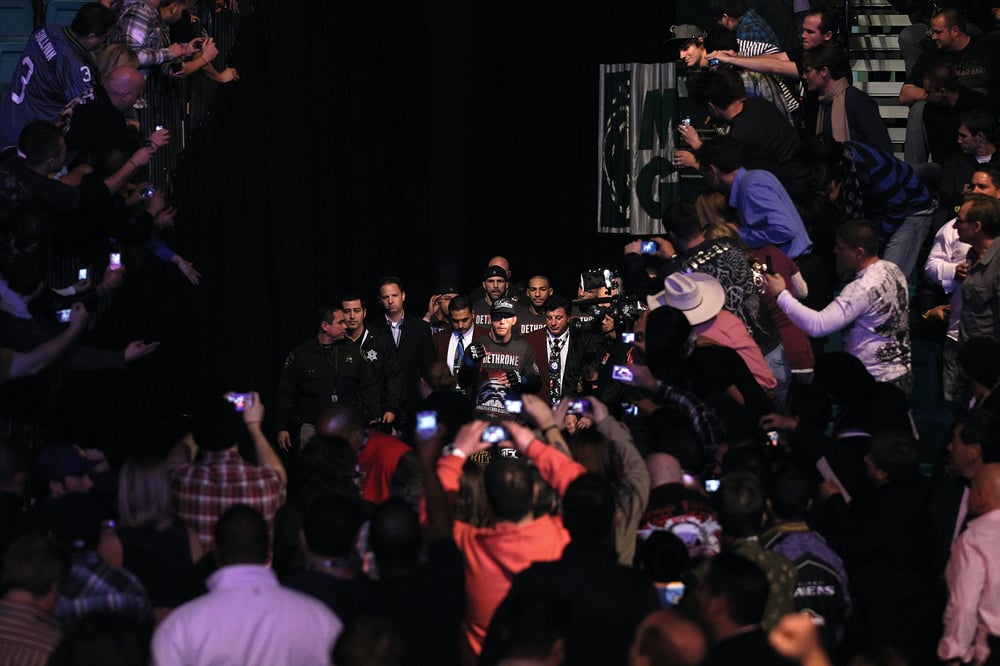
The Future as we know it
This sport is a black and white business. The amount of work you put in determines what you get out of it. That being said, we’re seeing an evolution in the way fighters and coaches plan fight camps. Laimon earlier described the sport of MMA as being in the ‘leather helmet football days,’ and he couldn’t be more right.
Mixed martial arts has changed dramatically inside the last decade. However, this sport is still continuing to improve in new and fascinating ways, so expect the way fighters train to evolve with it.
FIGHT CAMP CAST
When you get into the upper echelons of professional MMA, organizing your fight camp can be a full-time job in itself. With the array of coaches, sparring partners, nutrition and health professional you need at your disposal costing cold hard cash, that winners check may not stretch as far as some fans may think.
UFC heavyweight champion Junior Dos Santos’ camp for Cain Velasquez cost him a reported $100,00, and with more and more fighters traveling to train across the globe that figure is increasing year on year.
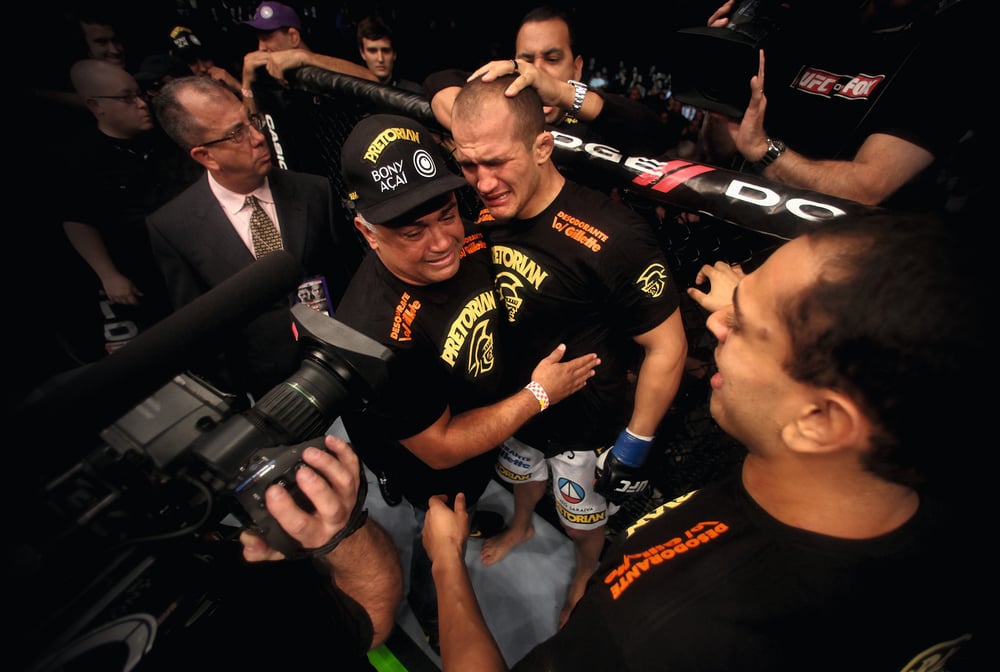
THE COST TO BE THE BOSS
At the inaugural UFC on Fox event, Junior Dos Santos KO’d Cain Velasquez to claim the UFC heavyweight title belt, also picking up the ‘Knockout of the Night’ bonus along the way. For just 64 seconds work, the Brazilian earned a disclosed purse of $285,000*.
However, that was anything but cash in the bank for ‘Cigano’ – after all, training doesn’t come cheap, especially at the very top. According to the champion, it cost him R$100,000 (Brazilian Real) to prepare for the fight with Velasquez. That most likely included things like sparring partners, travel expenses and board and lodgings throughout his preparations.
And while it’s unknown exactly what costs Dos Santos factored into his camp spending, most fighters also have to factor in the wage of their head coach too, generally somewhere around 10%. And, on top of that, the cut of their manager/agent, which can be as much as 20%.
Also, most organizations – including the UFC – will cover the travel and boarding costs for a fighter and two coaches for an event. However, if your team extends past that – and Cigano had four cornermen for the first UFC on Fox card – it’s generally an additional cost that’s also picked up by the fighter.
Naturally, at the elite level, most combatants will also incur some sponsorship earnings, which can vary from simply free apparel or clothing right through to million-dollar endorsements. But that really only shows up as a genuine earner if and when you’re mixing in title contention.
To run a fight camp, then, can be a risky business for fighters, who have to balance the costs against their earnings. But, as the saying goes, you reap what you sow and for the new UFC heavyweight champion at least, it was an outlay worth every cent.
...









